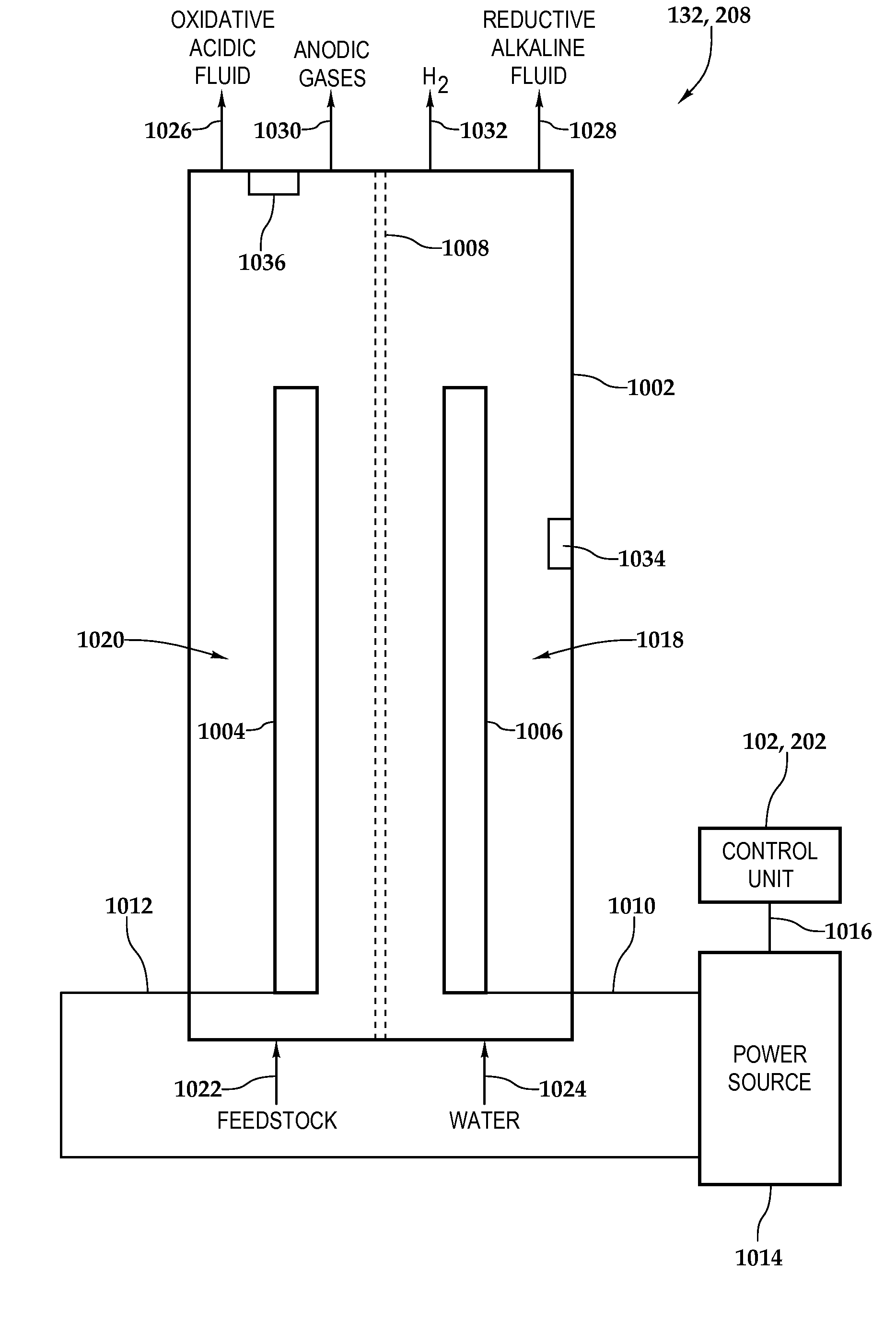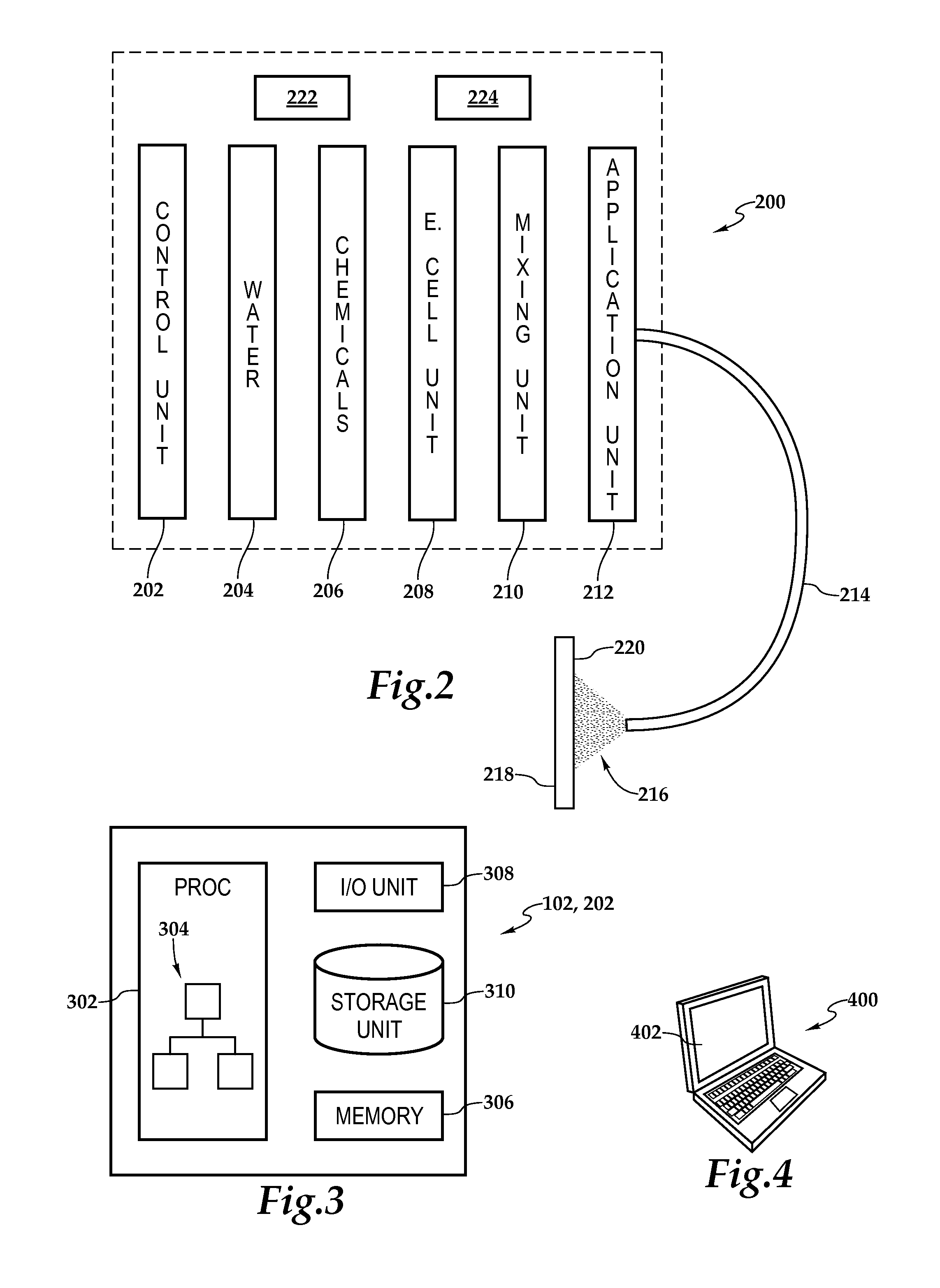Electrolytic System and Method for Generating Biocides Having an Electron Deficient Carrier Fluid and Chlorine Dioxide
a biocide and electron deficiency technology, applied in biocide, water/sewage treatment by oxidation, halogen oxide/oxyacid, etc., can solve the problems of preventing deaths, affecting the biological decontamination of medical facilities and other public places, and conventional housekeeping and disinfection formulations are ill-equipped to provide effective biological decontamination, etc., to achieve rapid disruption of microbial cellular membranes, reduce logistical burden, and quickly inactivate micro
- Summary
- Abstract
- Description
- Claims
- Application Information
AI Technical Summary
Benefits of technology
Problems solved by technology
Method used
Image
Examples
example 1
[0126]A composition produced by the electrolytic chlorine dioxide biocide generation system was tested against microbes and the results are shown below in Table 1. The results were achieved by an independent laboratory, ATS Laboratories, Eagan, Minn., per U.S. EPA 40 CFR Part 158 Protocol—AOAC Germicidal Spray Method.
TABLE 1EPADemonstrated10 MinuteEfficacy -Kill Level -10 MinuteMicroorganism%Organic Load - %KillLot 1100%Not Required by EPAYesLot 2100%Not Required by EPAYes(59 / 60cultures)Lot 3100%Not Required by EPAYesStaph(Staphylococcusaureus)Lot 1100%Not Required by EPAYesLot 2100%Not Required by EPAYesLot 3100%Not Required by EPAYesMRSA(MethicillinResistantaureus)Lot 1100%Not Required by EPAYesLot 2100%Not Required by EPAYesVRE(VancomycinResistantfaecalis)Lot 1100%Not Required by EPAYesLot 2100%Not Required by EPAYesH1N1 (InfluenzaType A)Lot 1100%1%YesLot 2100%1%YesHIV Type 1Lot 1100%5%YesLot 2100%5%YesHepatitisLot 1100%1%YesLot 2100%1%YesRhinovirusLot 1100%1%YesLot 2100%1%YesLot...
PUM
 Login to View More
Login to View More Abstract
Description
Claims
Application Information
 Login to View More
Login to View More - R&D
- Intellectual Property
- Life Sciences
- Materials
- Tech Scout
- Unparalleled Data Quality
- Higher Quality Content
- 60% Fewer Hallucinations
Browse by: Latest US Patents, China's latest patents, Technical Efficacy Thesaurus, Application Domain, Technology Topic, Popular Technical Reports.
© 2025 PatSnap. All rights reserved.Legal|Privacy policy|Modern Slavery Act Transparency Statement|Sitemap|About US| Contact US: help@patsnap.com



